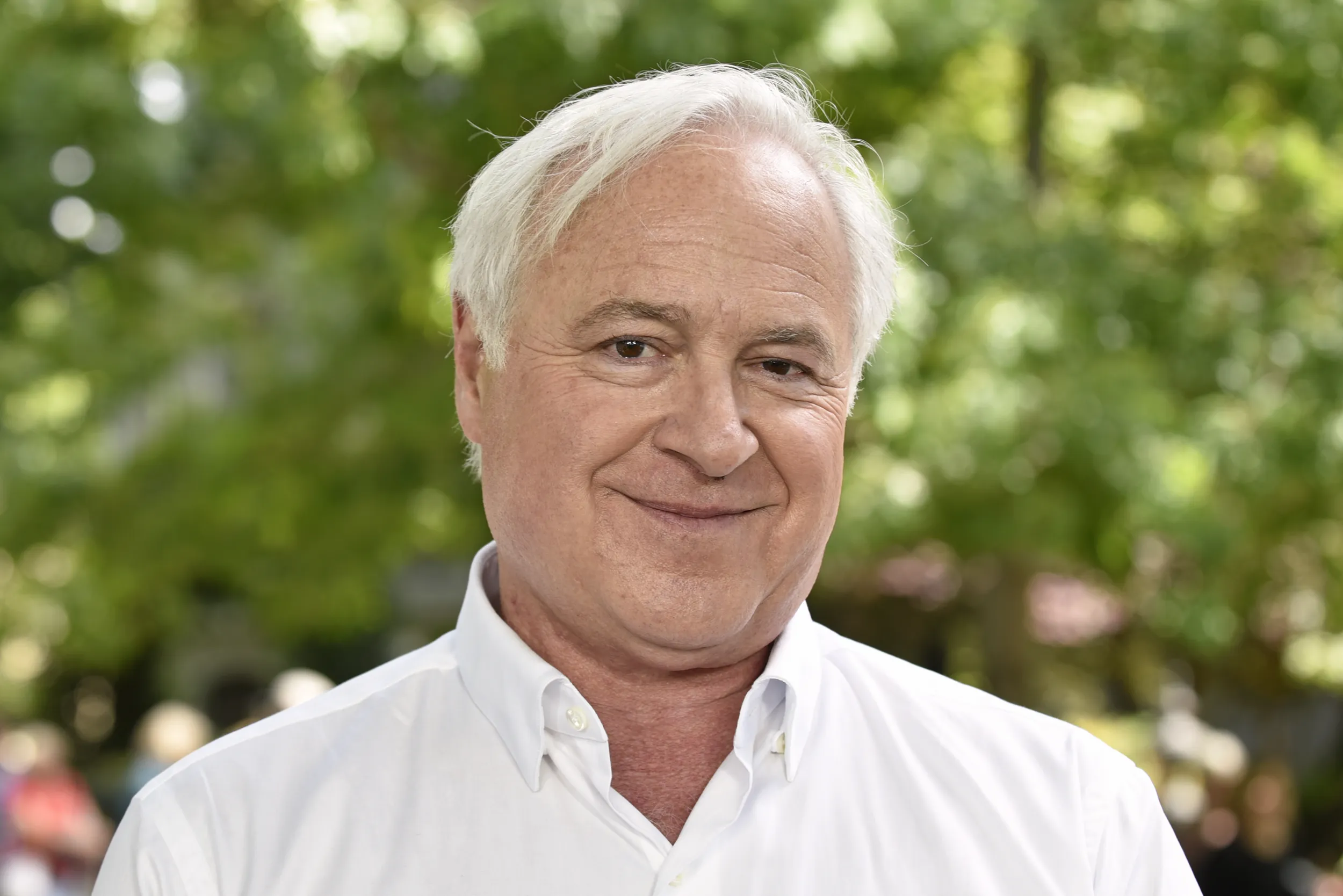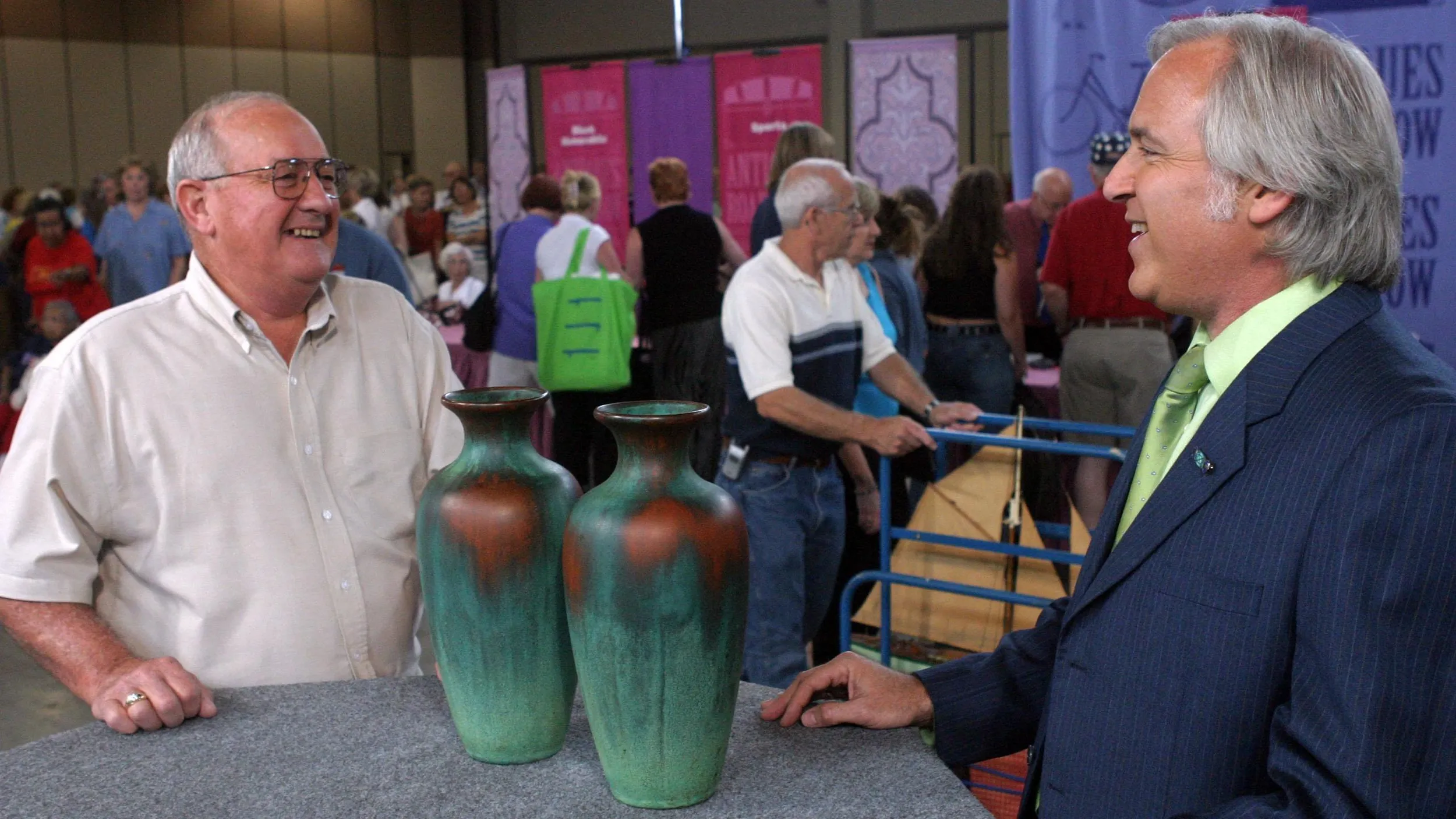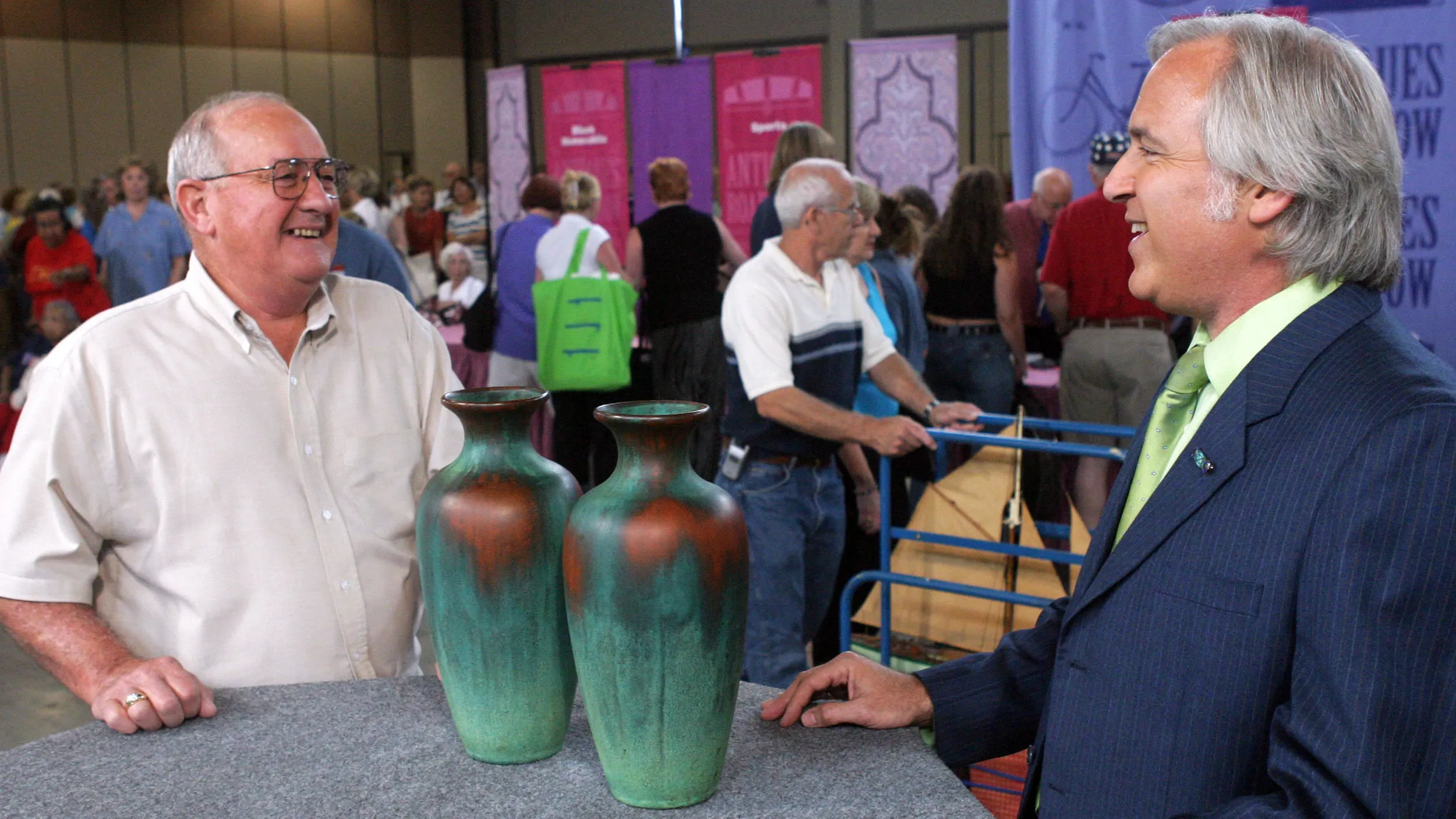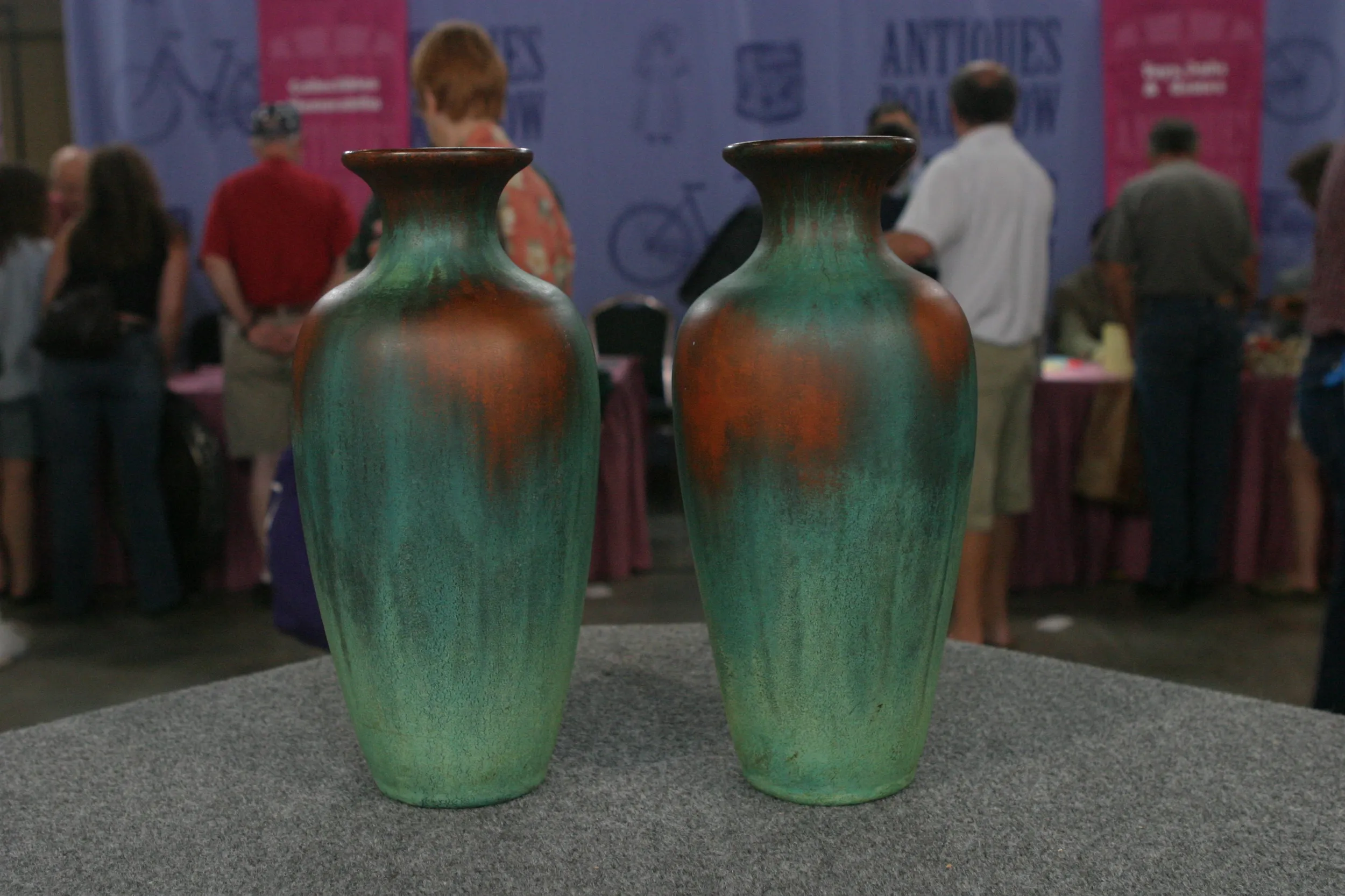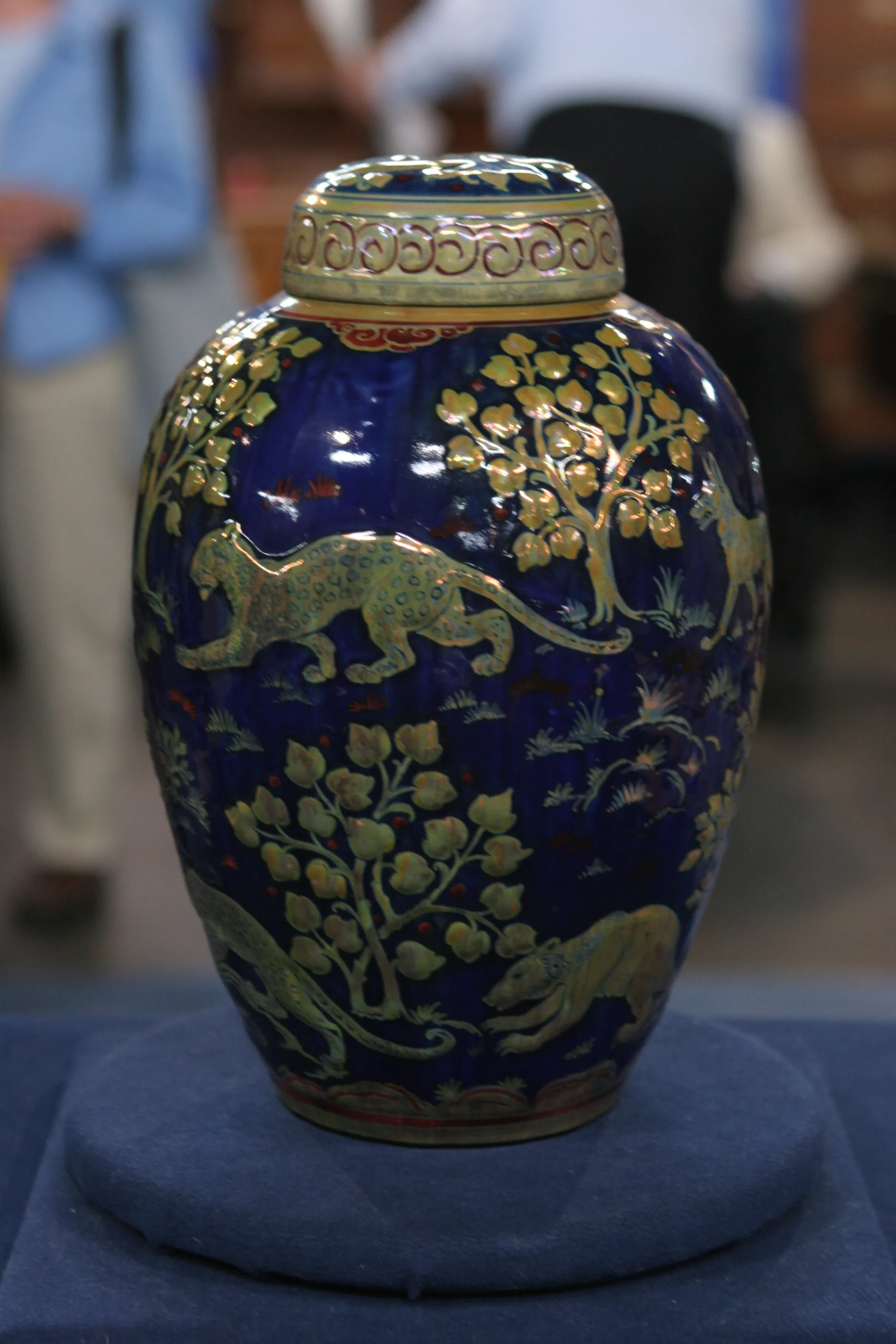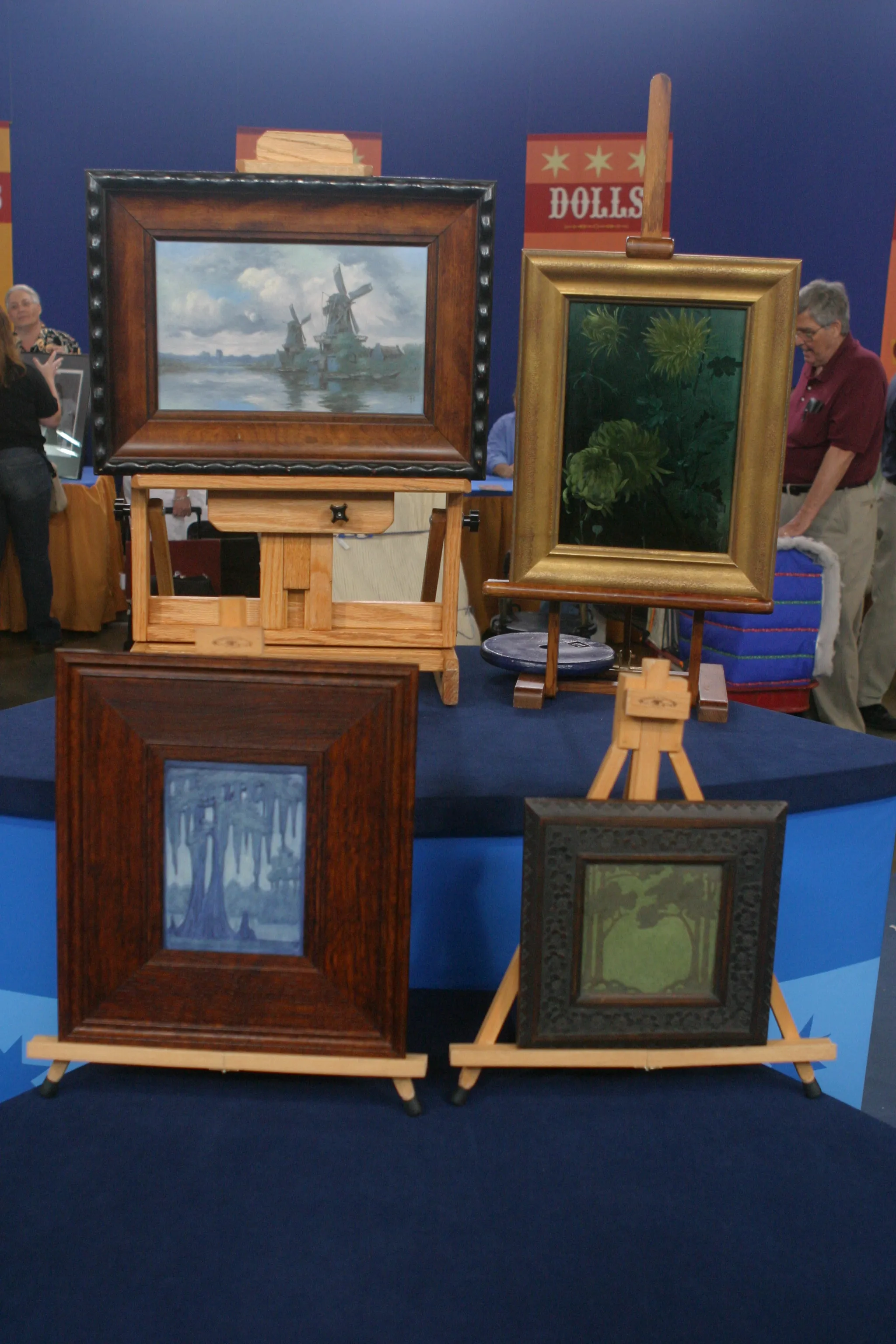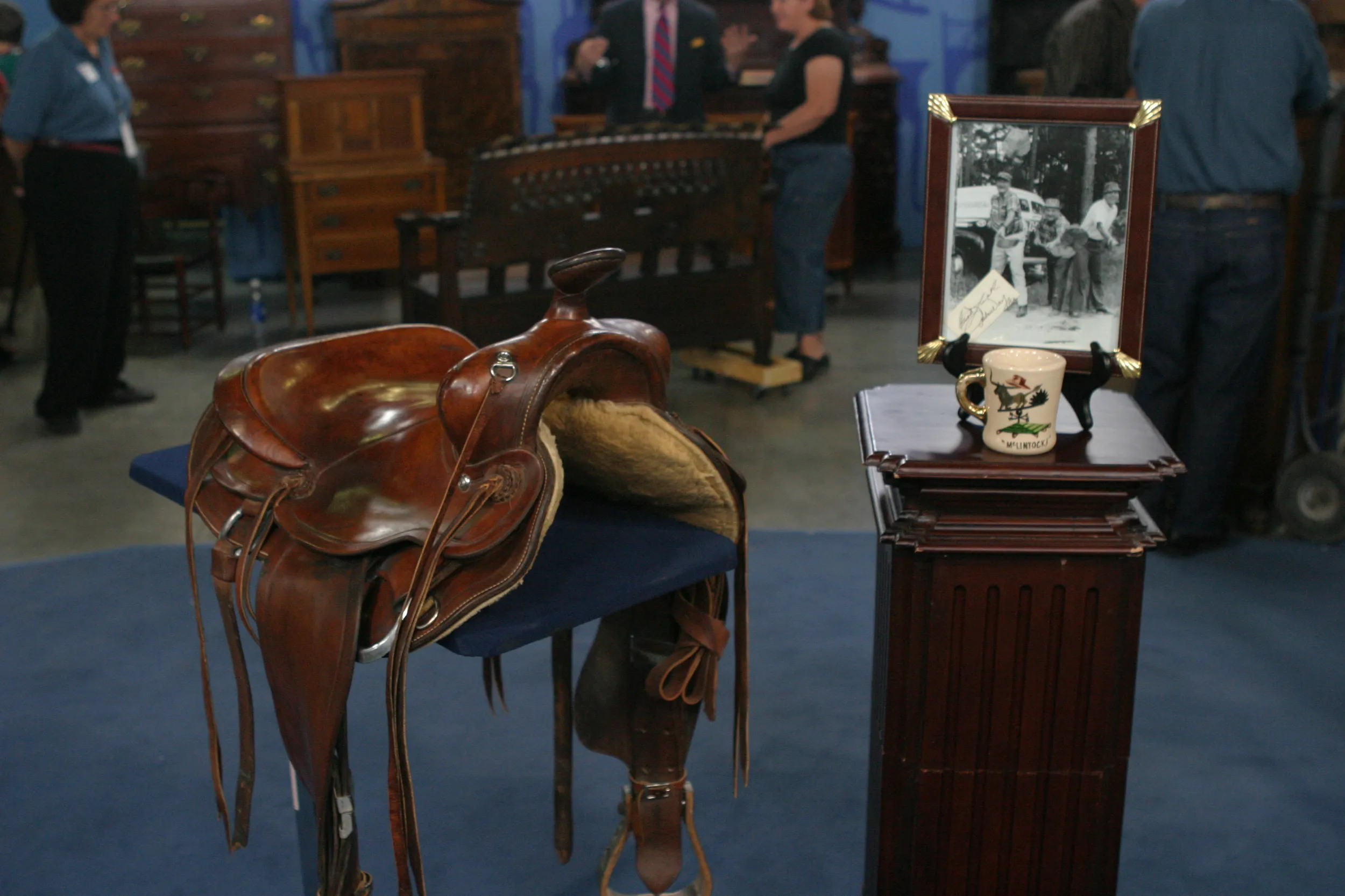APPRAISER: This is the first time we've had examples of Clewell Pottery on the show.
GUEST: Oh, yeah?
APPRAISER: And these are two beautiful examples. You said your daughter found these?
GUEST: Yeah, she bought them at an estate auction about 15 years ago. I believe she paid, I'm going to say in the neighborhood of $300, $325 apiece for them.
APPRAISER: Charles Clewell was making his metal-clad pottery from about 1903 till about 1950. He was influenced by a piece he saw that J.P. Morgan had had, it was unearthed outside of Rome in the late 19th century. It was an early Roman piece, and what he did is, he covered his pieces with a metal coating, and then he would patinate them and freeze the patination process, so these colors would be fixed. He was from Canton, Ohio, and he bought blanks from, like, the Weller Pottery in Roseville and Owens and Knowles, Taylor & Knowles. Curious thing about Clewell is, when he died, he instructed his heirs to burn his formula.
GUEST: Oh, really?
APPRAISER: So that it couldn't be replicated, and so the process is now lost. There are a number of them out there. He made pottery for many years, but very seldom do you see pieces that number one, are this large.
GUEST: Okay.
APPRAISER: Number two, I've never seen a matched pair this large.
GUEST: I see.
APPRAISER: And I've seen hundreds of pieces of Clewell. Number three, the color combination's really good on these. You have that really nice rust color mixing with that verdigris green. And on top of that, in spite of what they say that the colors are fixed, if people try and scrub them, they can clean the colors off, so very often you see Clewell pieces where the colors are shredded, and these are nice and bright and crisp. They're also very clearly marked. Typical Clewell mark incised into the bottom, or actually more like etched into the bottom with production numbers. There's just nothing wrong with these. They're absolutely perfect.
GUEST: If you cleaned them, what would you use to clean them up with?
APPRAISER: I would probably just use a slightly damp cloth and leave it at that.
GUEST: All right.
APPRAISER: Because I think the surface is a little more fragile than we've been led to believe.
GUEST: All right.
APPRAISER: In terms of value, again, I've not seen a matched pair, but I think individually, they have to be worth at least $3,000 to $4,000 apiece. A matched pair might bring $7,000 to $8,000.
GUEST: You said $7,000 to $8,000?
APPRAISER: Yeah, for the pair.
GUEST: For the pair?
APPRAISER: And it wouldn't surprise me if they brought more, because it... to find a pair like this so perfectly matched would be very difficult.
GUEST: My word. We had no idea these were worth anything like that. We... goodness.
